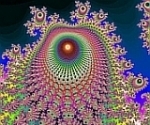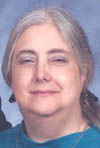CROWPAT wrote:As promised here are the three days of charts at 13/13/13. They are not very pretty with unacceptable PB.
I can't stay at these settings
- feel rotten today.
http://www.afsashoot.com/PAT1.html
CROWPAT, I would suggest going back to your previous favorite BiPAP autoSV settings for just as many days as it takes you to subjectively feel as you did before these experiments. The primary purpose of this thread, IMHO, is to gradually and cautiously discern treatment patterns toward improved results. On that basis, these experiments should literally take weeks. So reader entertainment value and instant curiosity-gratification are not legitimate objectives for this thread.
With that said, the above treatment failure was a huge success. Let's put your above comment together with your observation I have below:
CROWPAT wrote:The one thing I have noticed on the BiPapAutoSV is that when my "Breathing on my Own" number is 99.9% I feel better even if some of the other numbers are not as good as usual.
Focusing on reducing an AHI of 2 down to 0 should not be our primary concern as we methodically perform CPAP, BiLevel, and SV parameter variation tests--- hoping to discover treatment patterns that make you feel better. Rather machine-scored PB and subjective assessment should probably be our primary focus in your experiments. That 99.9% spontaneous-breathing target can be helpful but sometimes misleading as well: some BiLevel users consistently or intermittently
need a machine backed up rate to avoid those nights having been even worse. On that basis, your parameter variation tests specifically dealing with backup rate might cautiously explore both a wider and narrower window of control.
But we still have the majority of CPAP, BiLevel, and SV parameters to cautiously isolate and explore. As we experimentally attempt to isolate your response trends to those individual machine-parameter variations, we
might start to build a useful picture of which machine-based parameters yield highest dyscontrol
and following-day discomfort response rates with respect to deviation from optimum settings. Speaking of caution, I would like you to get a general health check from your doctor. And I would like you to tell your doctor exactly what you are up to. Please give him an opportunity to raise the white flag so to speak. Please give him the opportunity to raise
any white flags in light of your health checkup.
At this point, CROWPAT, you might choose to abandon further CPAP modality experiments altogether, or you might choose to cautiously explore lower fixed pressure. I would not recommend exploring higher fixed-pressure since you present a very clear pattern of PAP induced central dyscontrol and characteristic following-day biologic discomfort at that setting of 13 cmH2O. The objective of exploring lower fixed pressures would be two-fold: 1) to discover the comparative benefits (if any are discovered) of "permissive flow limitation" as I have quoted near the bottom of this post, and 2) to discover if a pressure lower than 13 cmH2O might serve as a less-disruptive obstructive-addressing base pressure for your upcoming BiLevel and SV parameter variation tests.
Again, my advice is to sleep well at your previously-determined best settings for several nights. We need your subjective feeling of daytime energy and your overall subjective assessment of biological wellbeing back to that same
baseline feeling that you were hoping to improve. Subjective assessment of "physical wellbeing" is probably far more key for CSDB/CompSAS individuals than those of us with ordinary OSA.
-SWS wrote:As long as sleep and respiration stay reasonable, here is rationale for exploring a lower fixed pressure (emphasis mine in red):
[u]Recognition and Management of Complex Sleep-Disordered Breathing-[/u] by Geoffrey S Gilmartin; Robert W Daly; Robert J Thomas wrote: Avoiding Pressure Toxicity
Patients with complex disease are sensitive to positive airway pressure, and usually flow limitation cannot be eliminated without worsening periodic breathing or inducing central apneas. An immediate worsening with bilevel ventilation may be seen, consistent with an effect of induced hypocapnia on the peripheral chemoreceptors. One approach is 'permissive flow limitation' - allowing some obstruction to persist and thus avoiding the worsening of control dysfunction.
If "permissive flow limitation" can manage to significantly reduce your PB and biologic discomfort, then a subjective assessment comparison at that point (against SV modality) is probably a worthwhile endeavor. However, there is the distinct possibility that "permissive flow limitation" via lower CPAP pressure will
not sufficiently reduce your PB or biologic discomfort. If we knew the outcomes of each pressure-treatment experiment in advance, then they wouldn't really be "
experiments" toward desired treatment gains.
Comments?










